
The Environmental Impact of Logistics and How to Reduce It
Discover the environmental impact of logistics and learn sustainable strategies to reduce its carbon footprint. Join the movement for a greener future.

Discover the environmental impact of logistics and learn sustainable strategies to reduce its carbon footprint. Join the movement for a greener future.
Climate change has become one of the most important factors influencing the logistics industry in the last decade. As global consumption grows and supply chains become more and more complex, the transportation business thrives. However, this also translates into increasing the environmental impact of the industry and larger pressures from governments, organizations, and consumers to develop more sustainable logistics. So what can be done to reduce the environmental impact of transportation? We present 7 ways to help the planet and gain the upper hand on the market at the same time.
Today, the logistics industry is responsible for around a quarter of global carbon dioxide emissions. This share may rise up to 40% by 2050 unless strong actions are taken, according to the European Environment Agency. Transportation carbon footprint and other air pollutants produced by road transport and aviation not only contribute to the greenhouse effect and quick increase of the planet’s temperature. They also have a more direct impact on human health, causing lung and cardiovascular diseases or even leading to premature deaths.
Apart from air pollution, the logistics sector can also be a threat to water supplies around the world. Ships produce large amounts of wastewater and solid waste that are released into the oceans and contaminate ecosystems. The noise produced by the sea freight can travel long distances underwater and disorientate aquatic animals that rely on the sounds to travel and communicate. Big marine mammals also risk collision with fast-moving ships. Not to mention oil spill disasters that have devastating consequences for the ecosystems of oceans and sea coasts.
The logistics industry’s consumption of non-renewable resources is another big challenge for the environment. This is particularly important when it comes to fuel. Even though electric vehicles are gaining momentum, large-scale logistics requiring cargo airplanes or container ships is still far from decarbonization. The transportation industry also consumes large amounts of packages, pallets, and containers, many of which are single-use and end up creating heaps of litter.
The logistics industry’s impact on the environment can be disastrous. Fortunately, new technologies can help to reduce its scope.
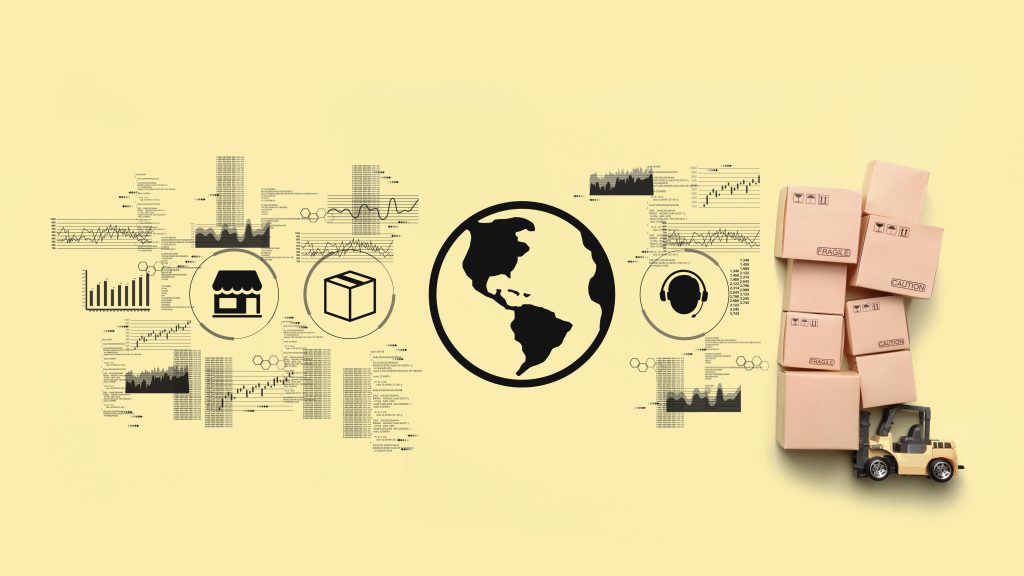
While electric trucks, using renewable energy sources, may be transformative for the logistics industry, they are still a matter of distant future. On the other hand, there are currently logistics software solutions available that can help transportation companies to reduce the environmental impact of their supply chains. In our How We Innovate podcast, we talk with cutting-edge companies from the logistics industry about the sector’s impact on the environment and ways to become net zero. Check out their 7 ways to green logistics.
The lion’s share of the logistics industry’s environmental impact, e.g fuel usage and pollution, can be saved by selecting the shortest and most cost-efficient routes. In the past, management of a large fleet required a lot of time and workforce. Today, route optimization software can help you to choose the most suitable route in seconds.
Fleet management systems track all your vehicles in real-time and artificial intelligence analyzes traffic conditions, weather, and vehicle and workforce availability to predict the best solution. This way, automated route planning software can optimize your whole fleet in real-time and reduce not only transportation carbon footprint but also the cost of fuel and salaries.
Optimizing your fleet can also mean that you decrease the empty miles your fleet of trucks or ships covers. Transport vehicles and vessels often return empty after delivering products or materials to their destinations.
‘Every time we’re running a track that’s empty, someone’s running a truck that’s empty to a place to go pick something up and come back, you know, that’s a wasted opportunity in our minds to do better for the planet.’
Scott Evans, Director of Product at RunBuggy
This waste can sum up to quite a large number, particularly in long-distance sea transportation.
‘The biggest waste is what’s called ballast days, which are empty sailing days. Globally today, roughly 250 billion is spent on chartering ships to move commodity cargoes around. Of that, round about 25% so 75 billion is funding empty sailing days. Roughly a third of those are entirely avoidable.’
James Kellett, CEO and Co-founder of Spot Ship
Fortunately, with international marketplaces like Spot Ship or dedicated fleet management software, logistics managers can track and reduce empty miles and decrease air and water pollution.
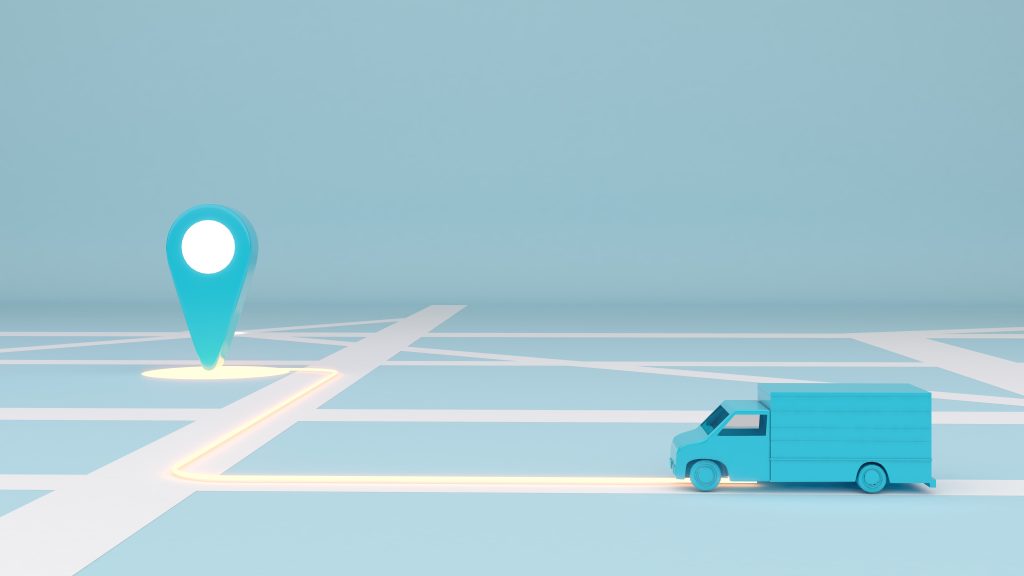
Choosing the best route and reducing empty miles are the best ways to decrease the length of miles your fleet has to cover. But did you know that you can track and optimize how you cover it as well? For example, FieldLogix created a complex software that enables monitoring and optimizing behavioral patterns of truck drivers employed by your company.
‘When we started, a lot of fleets didn’t really concern themselves with idling, they weren’t worried about idling. […] We showed the fleets, not only what their drivers’ green score was, but we showed them how much fuel was being spent due to idling and speeding, we showed them the cost.’
Yukon Palmer, CEO and Founder of FieldLogix
Fleet telematics, equipped with dash cameras, tracking devices, and maintenance monitoring, can help not only to optimize the management of your resources and contribute to sustainable logistics. Artificial intelligence can also improve drivers’ safety by letting them know in advance about necessary maintenance services or tracking how many hours they have already spent behind the wheel.
Not every transportation technology has the same impact on the environment. While air cargo can take up to 0.8 kg of CO2 per Ton-Mile and road transport almost 0.2 kg of CO2 per Ton-Mile, sea freight and trains are considered more green transportation, producing a smaller carbon footprint. If you plan to implement different means of transport in your supply chain, using rail or ships for long-distance shipping can be the most environmentally-friendly solution.
Although electric and hybrid vehicles are still a novelty, especially in large-scale transportation, they are becoming more and more popular. In 2022, 5.2 million Battery Electric Vehicles and 1.9 Plug-in Hybrid Electric Vehicles were sold around the world, mainly in Europe, the United States, and China. Such vehicles can be net zero when it comes to cutting greenhouse emissions if the energy is produced from renewable sources. They are also quieter and produce less air pollution than traditional engines. A perfectly green logistics for local deliveries.
Apart from eco-fleet, a positive impact for the environment can also be achieved in the warehouse management sector. Huge amounts of waste, losses in reverse logistics, and managing complex operations are the main improvement areas.
‘About 25% of all returned products go to landfill. In consumer electronics, it’s significantly higher than that. Last year, from all of the returned products we received, we managed to resell 96%. And the vast majority of the rest went to charity so we’re not contributing to the landfill.’
Neil Shelton, Chief Strategy Officer at GXO Logistics
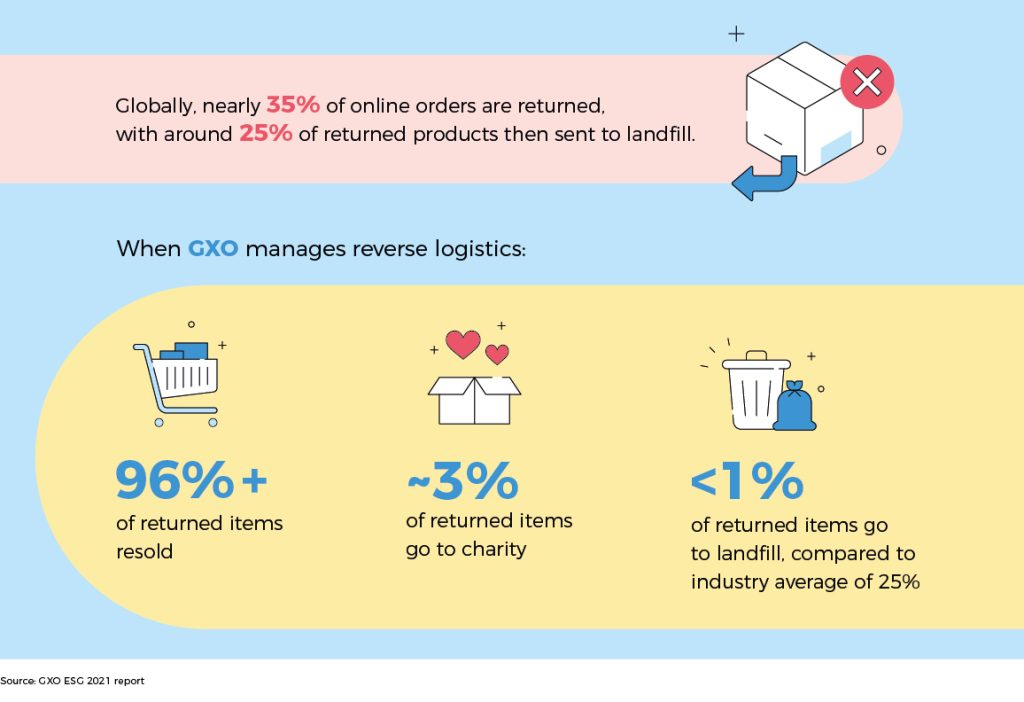
Fortunately, big players in warehouse management systems, such as GXO Logistics, constantly challenge the industry by introducing cutting-edge green solutions. Their facilities are not only equipped with sensor networks that capture carbon footprint in real-time but also help to automate the operations to improve order accuracy and optimize recycling of returned products.
New technologies are used to decrease the environmental impact of building as well. Replacing halogen lights with energy-efficient LED lights, rainwater harvesting, air source heat pumps for administration areas, and environmentally friendly ammonia refrigeration are only a couple of examples of how to save natural resources and reach operational footprint goals at the same time.
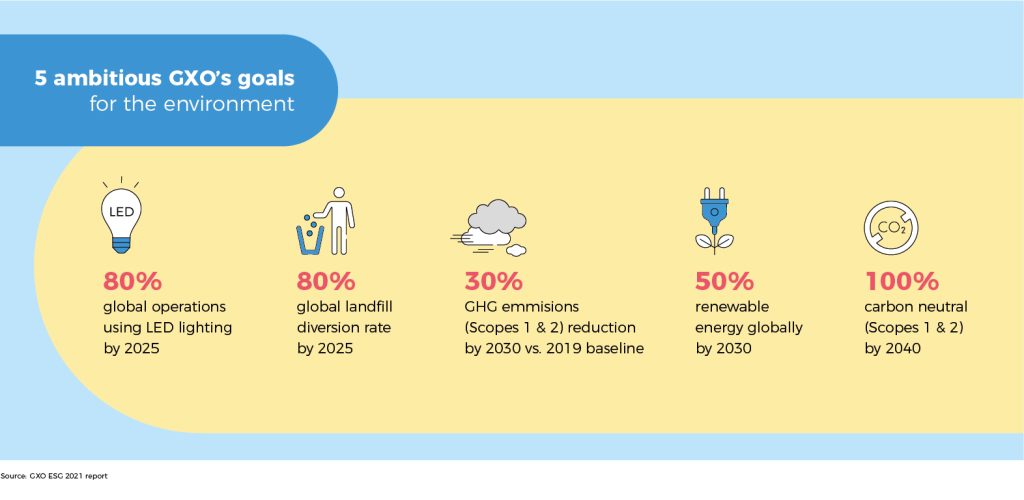
Want to optimize your logistics processes with advanced software that improves both efficiency and sustainability? Discover how we can support your business here.
The introduction of sustainable supply chains cannot be complete without keeping in mind the amount of litter the logistics industry produces. This can be achieved by reducing plastic packaging or changing them to biodegradable ones. Currently, the market offers different types of eco-friendly containers, including paper, glassine and seaweed envelopes, cellulose and cornstarch packaging, and paper tapes. Do not forget about the good old recycling as well – use wooden pallets or packaging made of recycled plastic.
A green and cost-effective solution is also maximizing product loads per shipment or – on a smaller scale – kitting, which means compiling individual items or components parts into a ready-to-ship package instead of sending them separately. Consolidating shipments enables you to fully utilize the containers you transport and prevent excessive pollution or costs.
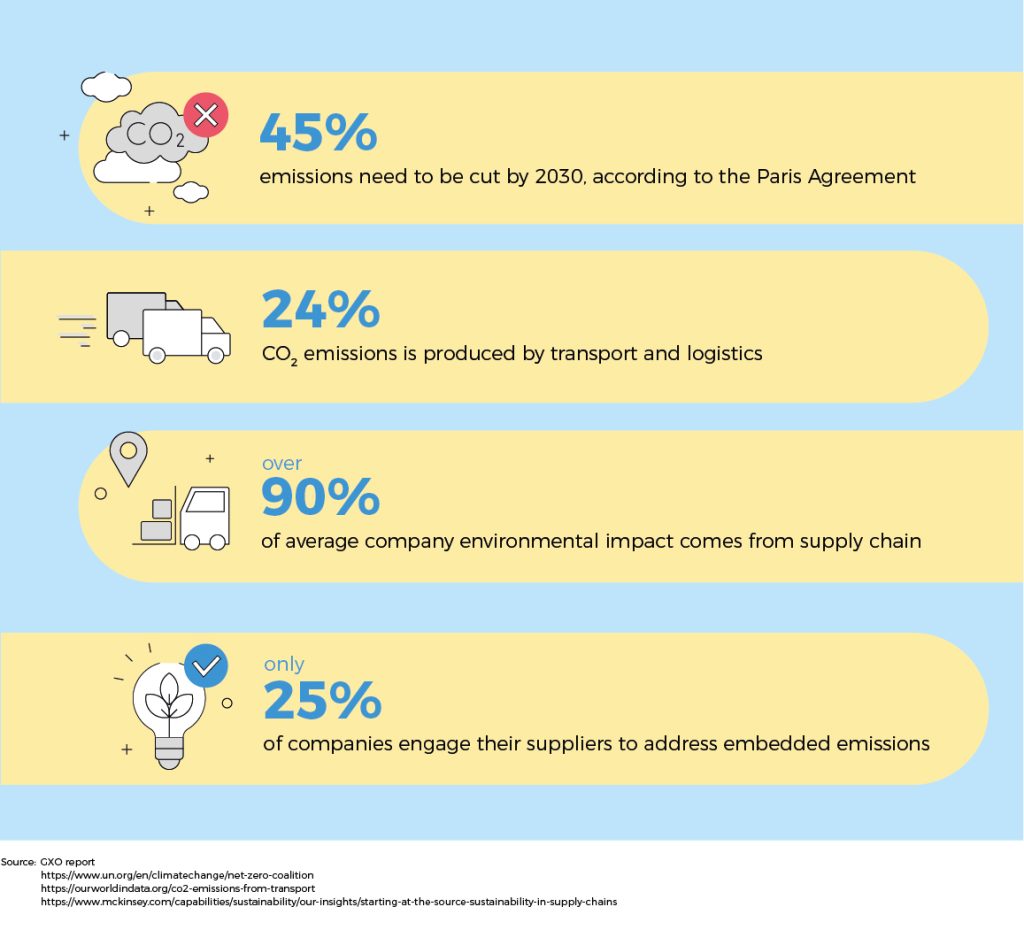
In green transportation, every logistics company has to play its part. But what if we could also combine the pro-environmental efforts within the industry and take advantage of the economies of scale?
In the network society, a good example of how to better use the resources are marketplaces that connect clients and transport providers like RunBuggy.
‘We’ve put together a string of services that make sense for shippers and haulers alike. And the way that we’ve done that really is through transparency in pricing, and pay and the payout.’
Scott Evans, Director of Product at RunBuggy
Such software solutions help to optimize work not only for one company but for the whole industry branch and solve the problem of empty miles or choosing the best routes.
As you can see, there are many solutions for more sustainable logistics. Many of them are based on dedicated logistics software, which can help to track and optimize your operations. From discovering and eliminating empty miles to choosing more eco-friendly routes and vehicles, every transportation company can easily play its part in the global effort to reach net zero. New technologies can also help you to manage your warehouses in an eco-friendly way and limit plastic packaging used by the industry. This way, you can not only reduce your transportation carbon footprint and waste but also save money and resources.
Do you worry about the environmental impact of logistics? Is your company doing logistics and transportation? Do you need help with software development for more sustainable logistics?
Fill in the form below to get a free consultation. Feel free to leave us a message below, and we’ll help your logistics business thrive with the help of our bespoke software development services.
 Hi, I’m Marcin, COO of Applandeo
Hi, I’m Marcin, COO of Applandeo
Are you looking for a tech partner? Searching for a new job? Or do you simply have any feedback that you'd like to share with our team? Whatever brings you to us, we'll do our best to help you. Don't hesitate and drop us a message!
Drop a message